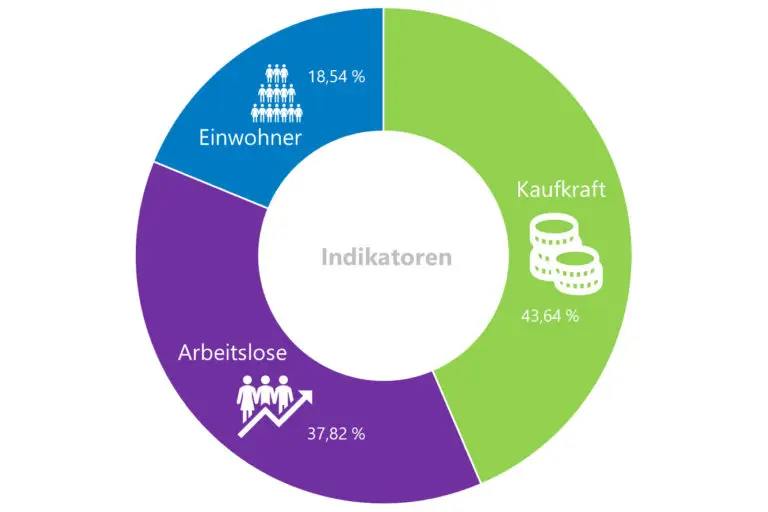How much can housing actually cost?
Rent levels in Germany are rising steadily. In urban areas in particular, this is leading to increased interest in regulating the housing market. The rent level is usually regulated via the rent index - although the specific form this takes sometimes differs significantly from city to city.
Comparison of rental valuation models
As part of his dissertation at the Westfälische Wilhems-Universität Münster, Dr. Christoph Picker therefore compared various models for estimating apartment rents. In addition to the characteristics of the apartment itself, its location in the urban area was also examined in more detail and was therefore given special consideration. The aim of the study was to achieve the highest possible accuracy and standardizability of the rent estimates.
Availability of fine-grained data
In order to be able to better determine the influence of location on rent, a fine-grained and valid database is a prerequisite. However, official data on the surrounding area is often only available at city level and is therefore not suitable for explaining differences in rents within a city. However, in order to achieve improved comparability, the situation had to be modeled on the basis of reliable neighborhood data, among other things.
Based on previous studies, social indicators such as purchasing power per inhabitant and the unemployment rate were considered particularly relevant in addition to population density. Furthermore, a suitable basis was sought for clustering areas with comparable rent levels - however, zip code areas or city districts appeared to be far too coarse for this application. As the study was to cover ten large cities in NRW, the availability of area-wide environmental data was also an important prerequisite for a promising application.

The application example is based on Dr. Christoph Picker's dissertation, which he completed with "summa cum laude" at the Westfälische Wilhelms-Universität Münster (WWU). With around 45,000 students and around 280 degree courses, the WWU is one of the largest universities in Germany, with the Faculty of Business and Economics being one of the largest of the 15 faculties with over 5,000 students. Interdisciplinary and application-oriented research is the focus of the faculty's scientific orientation.
Dr. Picker studied business administration at the WWU (Münster), the University of Strathclyde (Glasgow) and the Xavier School of Management (Jamshedpur). He completed his doctorate at the Chair of Business Administration, in particular Controlling, of Prof. Dr. Wolfgang Berens.

Precise data for accurate rental price comparisons
Nexiga provided the University of Münster with data on population density, unemployment and purchasing power at residential district level, among other things, for a broad-based analysis that was also intended to lead to a more well-founded statement.
As the large cities surveyed at this level contained an average of more than 500 homogeneous territorial units (the so-called residential quarters = fine-spatial geometry of Nexiga), it was possible to ensure a very good level of granularity for the study on this basis. The format of the data allowed easy linking with the housing data used and other external data sources (e.g. distances to primary and secondary schools).
With the support of Nexiga's data, various models for rent estimation could be implemented on the basis of the combined data records with additional information.
The influence of location on residential rents could thus be investigated on a solid basis. Furthermore, a clustering algorithm was used to aggregate residential areas with similar rent levels into a common "residential location". The aim was to achieve a realistic transfer to other cities.
The Neighbourhood as a "common denominator" to explain differences in rents
"It is essential to make scientific assessments on the basis of valid data. The fine-grained data from Nexiga contains important indicators that can be used to estimate and analyze the influence of location on rent. The environmental data at neighbourhood level could make a significant contribution to explaining differences in rents within a city."
Christoph Picker, Westfälische Wilhelms-Universität Münster (WWU)
More accurate rent estimates through location consideration
The use of environmental data was able to increase the proportion of variance in square meter rents explained by the model by around 11 % points, from an average of around 35 % to around 46 %. In terms of total rents, it was even possible to explain around 86% of the variance.
In addition to the more precise rent estimates themselves, the estimated coefficients of the social indicators also proved to be useful. In almost all models, these corresponded in sign to the expected effects (this refers to the positive effect of purchasing power and the negative effect of unemployment). For the most part, they even proved to be significant in the study. This is therefore an important finding in order to classify such assessments as solid and meaningful.
The clustering of the Nexiga residential districts was also a major advantage in terms of comparability. This made it possible to create areas with comparable "location quality" - these appear suitable, for example, to support the expert assessments frequently observed in practice (e.g. by the expert committee).
Fig. "Relative importance of the indicators" - The addition of the three indicators (data characteristics) improves the R² value of the model. This improvement can be attributed to the individual characteristics as shown in the graph.

